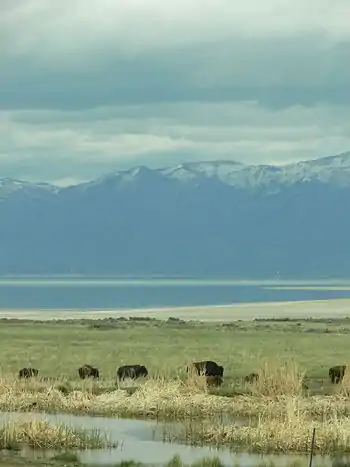Methods Manual for Salt Lake Studies
A manual of proposed standard methods for studies in brackish to hypersaline aquatic environments
Contents

View across the Great Salt Lake
- Scope and Introduction
- Describing your lake - hydrogeomorphology
- Effects of salinity on evaporation rate
- Sequential crystallisation of brine salts
- Measuring physical characteristics of the geomorphology
- Measuring physical characteristics of the brine
- Salinity
- Measuring brine density
- Measuring electrical conductivity
- Measuring refractive index
- Measuring chloride concentration
- Evaporating brine and weighing the residue (gravimetry)
- Light penetration
- Color
- Turbidity
- Suspended solids
- Temperature
- pH
- Salinity
- Looking deeper - preparing to analyse
- Inorganic chemical characteristics
- Organic chemical characteristics
- BOD
- TOC
- Tannins and humic compounds
- Biological characteristics
- Emergent macrophyte vegetation and terrestrial fringing vegetation
- Submerged aquatic macrophytes and macroalgae
- Phytoplankton
- Periphyton
- Benthic mat communities
- Productivity
- Zooplankton
- Macroinvertebrates
- Vertebrates
- Bacteriology
- Putting it together - integrated biological approaches
- References
- Authors
This article is issued from Wikibooks. The text is licensed under Creative Commons - Attribution - Sharealike. Additional terms may apply for the media files.